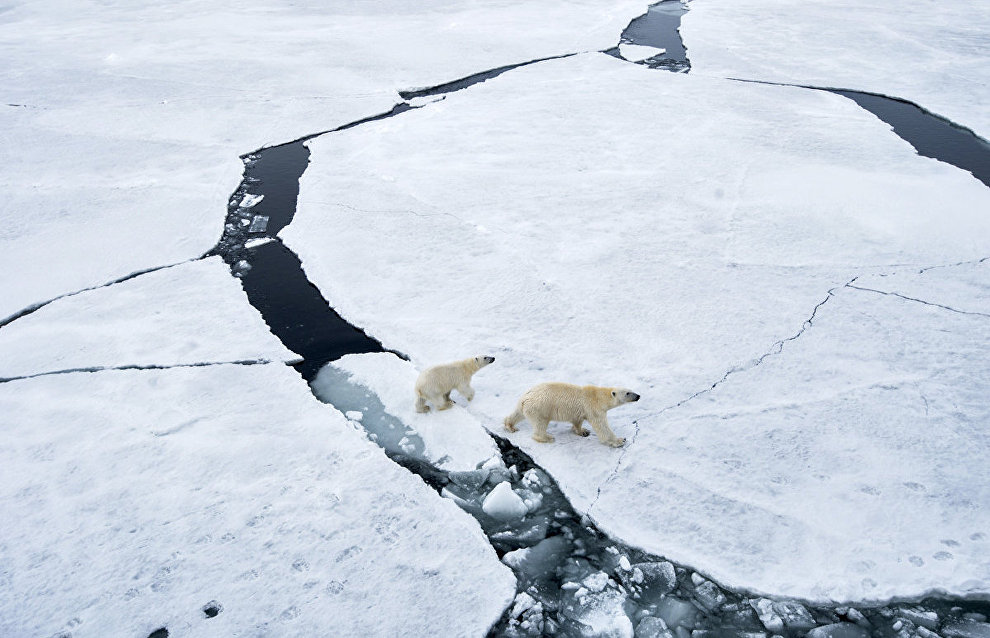Russian, US scientists to monitor sea-ice populations of seals, polar bears
From April through May 2016, Russian and US scientists will monitor the Chukotka-Alaska sea-ice populations of seals and polar bears from aboard aircraft, the press service of the Marine Mammals Council reported. Russian scientists will count seals and polar bears on sea ice floes in the national exclusive economic zone, specifically, the Chukchi and Bering seas. US experts from the Marine Mammal Laboratory of the National Oceanic and Atmospheric Administration will study their respective sector of Chukchi Sea.
The scientists will use state-of-the-art technology and monitoring equipment that has already successfully counted seal populations on ice floes in the White, Caspian, Bering seas and the Sea of Okhotsk. After processing the aerial images, Russian and US experts will collect data to more accurately estimate the total number of seals and polar bears on ice floes in the Chukchi Sea and assess their state.
The project, named Arctic Wanderer, is to be implemented under a Russian-US cooperation program on the conservation of wild species of flora and fauna for 2016 to 2018 by the Russian Marine Mammals Council, the Severtsov Institute of Ecology and Evolution, the World Wide Fund for Nature, the Russian Arctic National Park, the Wrangel Island Nature Reserve, and the Joint Directorate of Taimyr Nature Reserves. The comprehensive research expedition will involve members of the Marine Mammals Council, experts from the Giprorybflot Research & Design Institute for Fishing Fleet, the Chukotka subsidiary of the Pacific Fishery Research Center, and the Severtsov Institute of Ecology and Evolution of the Russian Academy of Sciences.
